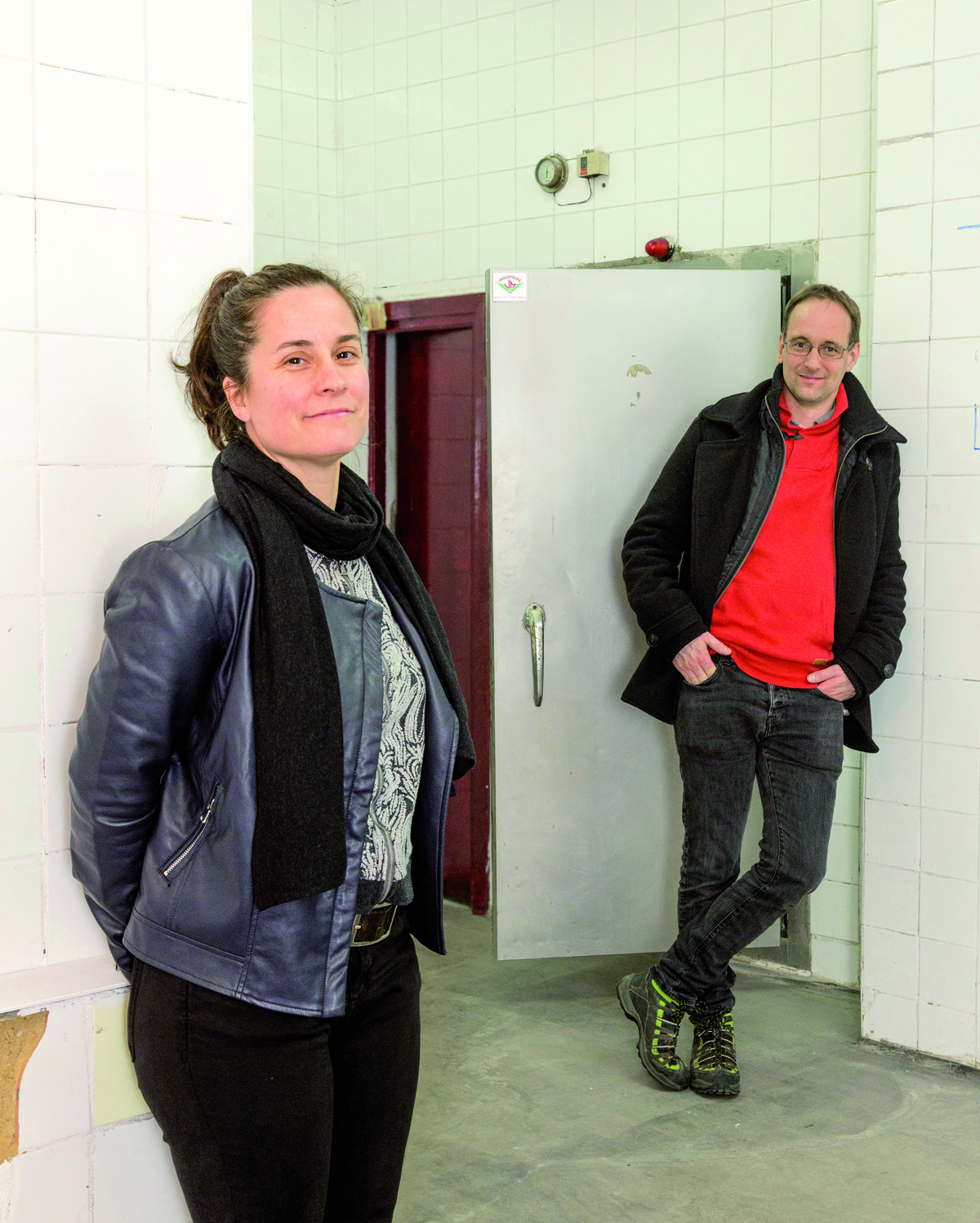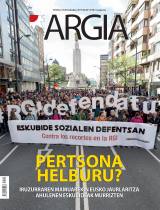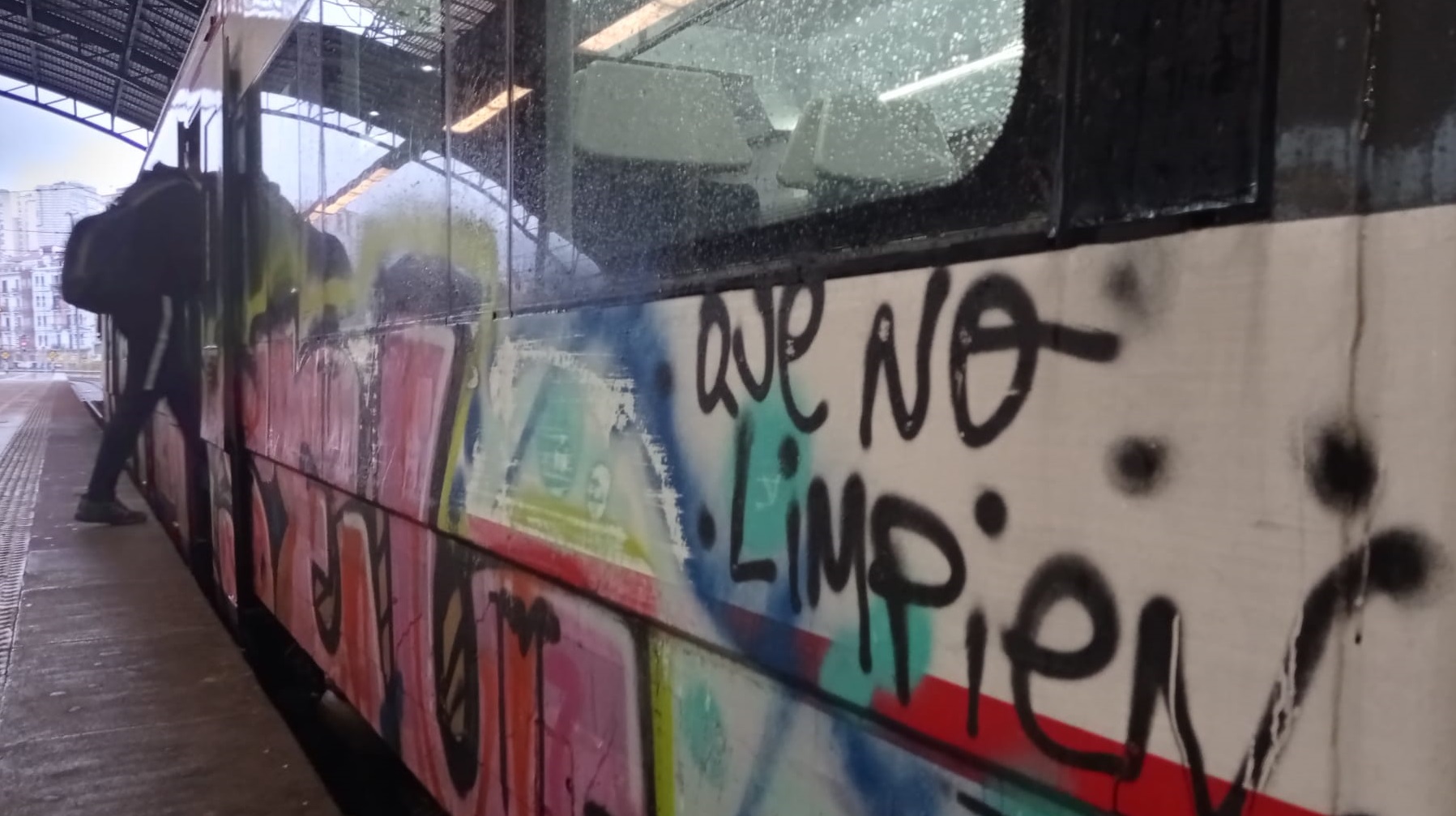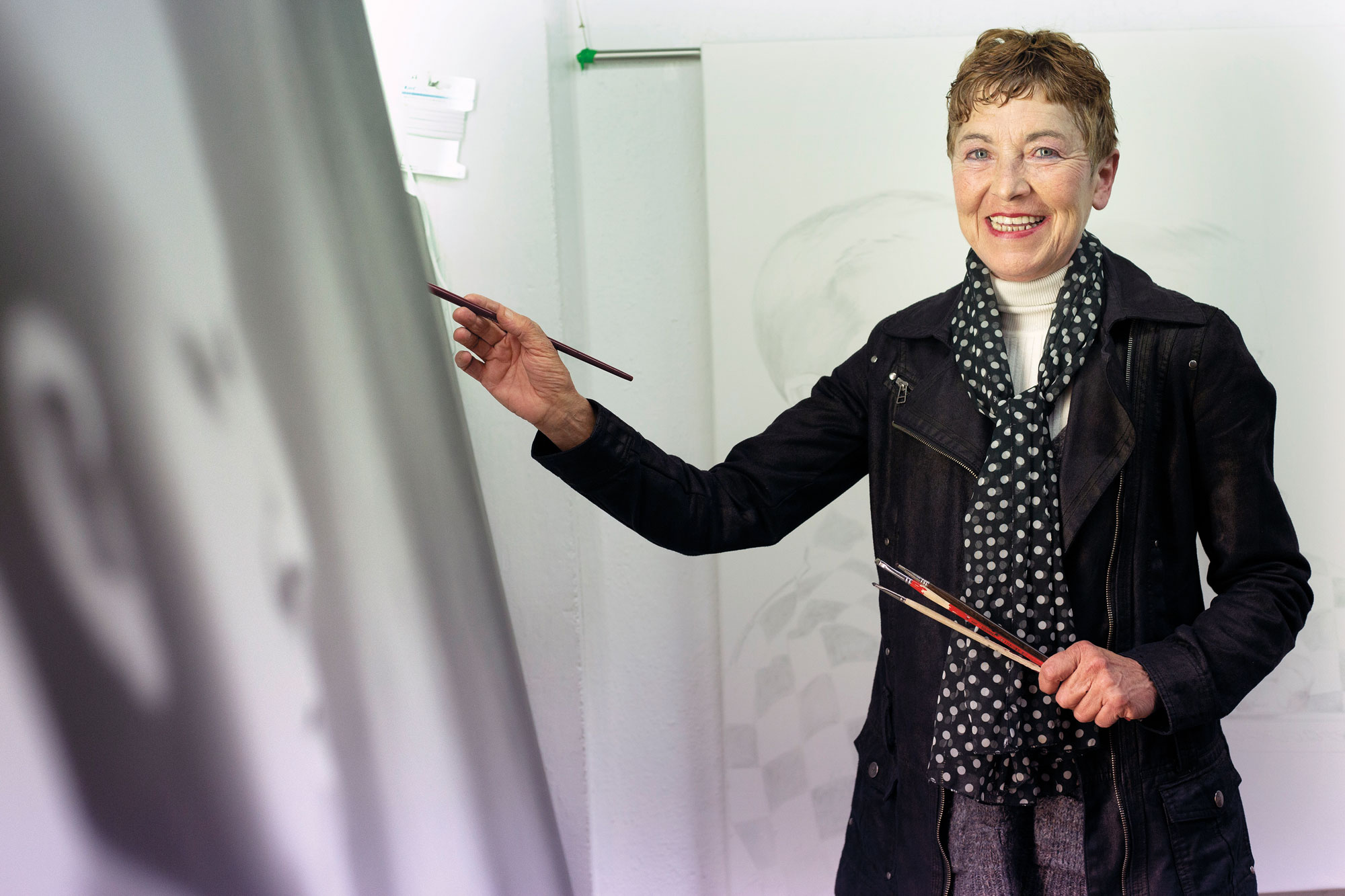"Whether or not the oysters of Iruña Veleia are true, the controversy reflects our society"
- Since 2001, Iratxe Jaio (Markina-Xemein, 1976) and Klaas van Gorkum (Delft, Netherlands, 1975) have been working together. Recently several pieces have been presented in different museums in Euskal Herria. On March 2, they were speaking at the Okela Creation Workshop. We had met them before the conference.

How and when did they start working together?
Iratxe Jaio: We met in the Netherlands, where I went to study, and we became partners. We were very helpful, but each one had its work, clearly limited; then we helped so much that it was not easy to set limits, to say that one task was mine and the other of it. We then decided to make a joint project between them, around the offices of the Rotterdam City Hall, to see how each worker decorated his office. That was a way to reflect on the space that each of us could have in a hypothetical collaboration.
Klaas van Gorkum: Authorship is also important to us; we have always wanted to deconstruct the idea of a single author. After so many years of activity, they see us as a couple of artists. After all, it is also a fixed identity. We're still looking for ways to work with others.
What does it mean to cooperate in artistic practice? How do you do it?
I. Birth: We talk a lot and for that, we spend hours and hours, we argue as we walk, we get angry and we re-reconcile. Being our works as they are, we don't use the study continuously, we don't try many things, but we only go there when we have the well-curbed idea.
Last year you presented a facility at the exhibition Tabakalera, Agency of Living Organisms: Main article: Main article. You went to an abandoned porcelain factory and made lots of pieces with the molds you found there. How was the plant reported and what caught your attention?
Iratxe Jaio:
“In the case of Iruña–Veleia, we were interested in where the limit is: when a line becomes drawing or letter”
I. Birth: Five years ago, we met the workshop because we went to help someone who was interested in it. Space is exciting, from the outside it looks like it's nothing more than waste, but then, when you go in, you find the things that they used in the factory, and with the old oven, the center of the factory. They closed in the 1970s, so many people have walked around before us, museums and everything. For us, at the time of working, this archaeology of waste was interesting: the artist can use those that nobody wants.
K. Gorkum: As a monument to modern life, we are very interested in the workshop; however, on the other hand, the topic of authorship crosses from one side to the other our works, that is, the tension between the art that has name and surname and the heritage of all. In the workshop we find those molds, and because of that we can make objects that were not ours, but not even the most original authors. In fact, during all these years, nature has reclaimed this workshop, it has affected the molds and the ways that keep them and it has transformed them: that is seen in the pieces that we made.
In particular, the installation consists of two parts: on the one hand, the video of the entrance to the factory and, on the other, the parts made with the molds that you found in the factory. Why both?
K. Gorkum: To put it simply, we introduced these two moments of the process to show what's behind the fabric, both important. The pieces are important, of course, but a little bit traditional, and maybe they can generate misconceptions about artist status. Sometimes there's an idea of artists, that they're witches, that in their workshop magical things happen, and all of a sudden the artwork comes out. And in our activity, there are things that are totally everyday, and they can also be shared with a lot of people, because we all have a creative and hardworking party. Working with material is not mystical. And that's why we put the video in: it shows you the first time we go into the factory, like the explorers, and how we approach what we find. That's much closer to our daily activity than the other.
I. Birth: Many times we work with familiar and regular objects, to which we add something through the video or head away, which has not exactly been depicted at first glance.
This work was presented in Tabakalera, which was until a few years ago a tobacco factory, and now we are in Okela, an old butcher's shop. How do you relate all of this to the issues we have referred to so far?
K. Gorkum: Iratxe and I come from very different social contexts, I am Dutch and he is Basque, and from the position of the workers today we find a common culture. There are differences, of course, but there is also a common pattern between us. If we go back and look at our previous generations, our grandparents and grandmothers have lived in rural areas and had to adapt to industrialization and modernized life. The next generation created a middle-class position, and you can say that, in that little bubble that is our family, we have been the first generation that has been lucky enough to imagine itself as an artist. Tabakalera, Okela, the abandoned porcelain factory and spaces like this, in short, are almost the physical expression of this change.
In your work you have also observed the controversy around the oysters of Iruña Veleia. What does this project consist of?
I. Birth: It's been a few years since we started on that, and the project has had several phases. We first made facsimiles around the controversial pieces. Subsequently, we held interviews with four people dedicated to the theme, both the members of the association SOS Iruña Veleia and the people of the commission formed by the Diputación Foral de Álava. We showed them the pieces on a screen and the interviewees offered their own interpretation of it. In the second phase it was intended to reach the original pieces, since they supposedly have not been seen by anyone in seven or eight years. In collaboration with the Azala space and the Artium Museum, we made an official request to the Museum of Archaeology (where the pieces are kept) to move the pieces 400 meters from this museum, that is, to Artium, to see how contemporary art could contribute to such a thorny issue. They are just pieces of clay, but we cannot forget their influence in society.
Klaas van Gorkum:
“The luxurious and sensational part of art isn’t interesting, it’s
pacifying some wealthy celebrities.”
K. Gorkum: Yes, it is quite clear that we do not care very much whether they are true or false, but that all this controversy, after all, is a mirror of the situation of society. Of course, the relationship with contemporary art can be easily seen, because the status of contemporary art is often in question, and the way these conflicts develop teaches us many things about our relationships, about the hierarchies that we maintain and that we deconstruct.
I. Birth: We got to know the subject through the media, like everyone else, and we were really interested in the social phenomenon; however, there's another interesting thing. When we looked at the photos, and looked closely at them, we realized that the inscriptions were very simple. Through the media, we have reached five or six, the most powerful, but there are hundreds, with small, round strokes, which can sometimes be considered as letters or not, it is difficult to say. So we were interested in knowing where that limit is, when a line becomes a drawing or a letter, what minimal signs you need to make sense.
And what are you going to present at Okela?
I. Birth: A few months ago, the Okela people came into contact with us, and one of the axes of their work is to engage artists from different generations in dialogue. Therefore, we intend to present a work done ten years ago and see how it works in this context, now. It is a work of eleven paintings based on the plan of Vitoria-Gasteiz. As we did ten years ago, many sites have not yet been built.
K. Gorkum: At the time that we did that work, Vitoria-Gasteiz was at the beginning of a new era, just before the real estate crisis, and we've talked about all that, about the deviations and the dreams that have been broken.
If I am not mistaken, you have been at the ARCO fair. How are you?
I. Birth: In the environment in which we have traveled, artists could work without having to do with the most commercial aspect of the art world. That's been done, clearly, and the people around us are increasingly working with the galleries.
K. Gorkum: It's the first time we've gone to a market, we don't usually sell work. In these four days we have learned a lot and we have aged ten years. Now, it's time to reflect, decide what we're interested in and what we're not, because even if your soul is willing to sell it, many things aren't interesting, for example, that fancy, sensationalistic part of art: pacifying some famous rich people, that's not interesting.
Behin batean, gazterik, gidoi nagusia betetzea egokitu zitzaion. Elbira Zipitriaren ikasle izanak, ikastolen mugimendu berriarekin bat egin zuen. Irakasle izan zen artisau baino lehen. Gero, eskulturgile. Egun, musika jotzen du, bere gogoz eta bere buruarentzat. Eta beti, eta 35... [+]
This text comes two years later, but the calamities of drunks are like this. A surprising surprise happened in San Fermín Txikito: I met Maite Ciganda Azcarate, an art restorer and friend of a friend. That night he told me that he had been arranging two figures that could be... [+]
On Monday afternoon, I had already planned two documentaries carried out in the Basque Country. I am not particularly fond of documentaries, but Zinemaldia is often a good opportunity to set aside habits and traditions. I decided on the Pello Gutierrez Peñalba Replica a week... [+]
























